Jump to:
Undercuts look great when they’re freshly cut. But transitioning out of an undercut when it begins to grow out leaves you with huge length differences that can look pretty awkward.
If you’re wondering how to grow out an undercut to skip the awkward transition phase, you’re in the right place. We’ll show you a few different ways to grow your undercut out and make the differences in length less obvious.
Whether you’re working with a too-long undercut with previously shaved back and sides or a grown-out nape undercut with otherwise long hair, you’ll find it easy and hassle-free to transition your undercut into something new with this guide.
How to Grow Out an Undercut: Keys to an Easy Transition
- Let the back and sides grow and trim the top to transition into a fade
- Leave the top long and part it to transition into a two block cut
- Skip the grow-out phase entirely and shave it into a buzz cut
- Get a short pixie, bob, or cover a nape undercut as it grows
We tend to ask ourselves a lot of questions before getting an undercut, like “Will this look good on me? How can I style my undercut? How much hair should I shave off?” Unfortunately, we often forget to ask ourselves what in the world we’ll do once the time comes to grow it out.
If you’re wondering how to grow out an undercut a little more gracefully – you know, without that awkward, uneven transition phase – the good news is that it’s definitely possible.
The bad news is that the process does take time, though there are some really effective shortcuts you can take! Figuring out how to grow out an undercut a bit more seamlessly starts with determining the kind of cut or style you’re going for.
You could let the sides and back grow out a bit before trimming the top (if needed) and transition it into a fade or tapered cut. This is a great option if you like clean-cut looks and styles that aren’t too long or shaggy.
You might prefer letting the top, back, and sides grow out while using the extra length on top to cover up shorter areas in a two block haircut. This is a great option if you like trendy, messy styles that have a little more length.
If you don’t think you’re patient enough to wait out the grow-out phase, you could always shave your head to a uniform length with a buzz cut.
This won’t be the ideal option for many, but if you really want to get rid of the length differences and can’t wait for your hair to grow out, it may be the best option. Or, if you have a nape undercut with otherwise long hair, you could opt for a pixie, bob, or other short, cropped style.
You can also choose styles that physically cover the shorter section while it catches up in length. This is the best option for women and men who’ve shaved small sections while leaving the rest of the hair at a longer length.
We’ll cover these grow-out tips in more detail shortly. First, let’s look at some of the challenges you may run into when growing out an undercut and how to address them.
Challenges to Growing Out an Undercut
Why are undercuts so hard to grow out? It’s the nature of the cut itself that makes growing an undercut out such a challenge. Here are some of the problems you might have with growing your undercut out – and how to approach these issues if you do run into them.
Big Differences in Length
The Problem: Undercuts involve shaving sections of the hair while leaving others much longer. This length contrast is one of the reasons growing an undercut out is so hard to do. You’ll be left with slow-growing short sections that starkly contrast the longer sections and aren’t blended, tapered, or faded to even things out.
The Solution: You can fix this problem by using the longer sections to cover shorter areas (if possible), trimming the top to make the length difference less obvious, or try a high bald fade to start blending the 2 different lengths together.
Letting the previously-shaved sections grow out a bit (6-8 weeks) will make it easier to begin to blend and transition the length differences so they look less awkward. As a last resort, you can shave your head to make all the hair the same, short length.
Slow-Growing Hair
The Problem: Hair grows pretty slowly – about half an inch per month, or 6 inches per year. If you’re trying to let your shaved sections “catch up” to the longer length on top, you’ll be waiting a while to accumulate that length. It can look pretty awkward in the meantime with such stark differences in length.
The Solution: If you have a “short” undercut – not a nape undercut – trimming the longer sections to make them closer in length to the short sections is one way to get around the issue of slow growth. You won’t have to wait as long for the short sections to catch up in length. A quick taper can then help blend the 2 sections to look more cohesive.
Opting for a long top, short back-and-sides haircut like the two block cut is another great way to address slow growth. Let the top continue to grow out and part it down the middle or to the side while avoiding trimming the shorter back and sides.
This will let the longer sections hang down over the shorter areas and take on a trendy, shaggy look. For slow-growing nape undercuts, your best bet is covering the shorter sections with the rest of your hair while it grows out.
Unless you’re willing to go very short – which can be cute, like a pixie cut or short inverted bob – using down and loose styles or low ponytails/buns is the easiest fix.
Temptation to Start Over
The Problem: Once you’ve been letting your undercut grow out for a few weeks, you’ll probably be tempted to say forget it and start over with a fresh undercut. It gets frustrating seeing how slowly the short sections grow out and you may be forced to adopt styles you don’t love to cover up the new growth while you wait. Don’t be surprised if you find yourself thinking another undercut is the best solution to the issue.
The Solution: There are a few solutions to dealing with the frustration of an undercut that’s not growing out as quickly or as nicely as you’d like, but getting another undercut is not one of them. You decided to move away from the undercut for a reason – shaving the short sections again will only buy you a little time before you’re in the same position.
Don’t give into the (normal) temptation to stick with the style if you’ve decided you’re ready for something new. Instead, be patient and try the transitional styles and cuts you’ll see below to get through it once and for all!
Certain Styles Make Grown-Out Sections Obvious
The Problem: Once you start attempting to grow your undercut out, you’ll find that certain styles and parting methods make the grown-out sections more obvious. Slicking the longer top back (with a short undercut), pulling your long hair up into a high ponytail or bun (with a nape undercut), or brushing your hair completely over to one side will all make the shorter length of the sections you’re growing out more apparent.
The Solution: Opt for styles and parting methods that disguise and cover the sections you’re growing out instead. If you have a short undercut with a longer top and previously-shaved back and sides, part the top down the middle instead of slicking it back or to one side to cover more of the short length on the sides.
If you’re growing out a nape undercut, let your hair hang freely in down and loose styles or wear low ponytails and buns to keep the undercut covered.
How to Grow Out an Undercut With Style: All Lengths
Can you make a grown-out undercut look good? Absolutely – with the right styles and methods! Try these style shortcuts to grow out your undercut and skip through as much of the awkward transition phase as possible.
How to Grow Out a Short Undercut

ArtemH/Shutterstock
When we say “short undercut,” we’re talking about haircuts that leave extra length on top while shaving the back and sides. Growing out a short undercut is definitely a challenge, but these helpful shortcuts make it a lot easier and better-looking in the process.
Transition Into a Fade or Tapered Cut

Roman Samborskyi/Shutterstock
A tapered cut or fade is a great way to blend out the different lengths in an undercut that’s growing out. To transition a short undercut into a fade or tapered cut that looks more cohesive, you’ll need to do 3 things:
- Trim the top to make it a little shorter (if it’s super long)
- Let the back and sides grow out for 4-6 weeks
- Ask your barber to taper and blend the 2 lengths, or give you a high fade
Once you give the back and sides a month or so to grow out, you’ll have about half an inch of new growth to work with. This makes it easier to blend and taper the longer hair on top to meet the shorter hair on the back and sides.
You can also opt for a high fade (take a minute to check out the types of fades) to clean it up a bit. If you can’t wait long for the back and sides to grow out, a high bald or skin fade will be your best option. It features a cleanly shaved back and sides up to your temples with longer hair blended on top.
Transition Into a Two Block Cut

Sihi/Shutterstock
A two block haircut features long hair on top and unblended, much shorter length on the sides and back. In this haircut, the long top is meant to hang down over the back and sides – a bit like a bowl cut or mushroom cut, but without the graduated length.
To transition a growing-out undercut into a two block cut, you’ll need to do 2 things:
- Avoid trimming any length from the top, back, or sides for at least a month
- Part the top section down the middle for the most coverage, or part it from the crown and fan it forward and down the sides.
You can have the ends of the longer top section textured a bit to make your two block cut look a little more lived-in and intentional. Continue letting the length on the sides grow out while you rock this look. After a few months, you’ll have enough length accumulated to transition into other medium-length cuts or styles.
Get a Short Buzz Cut
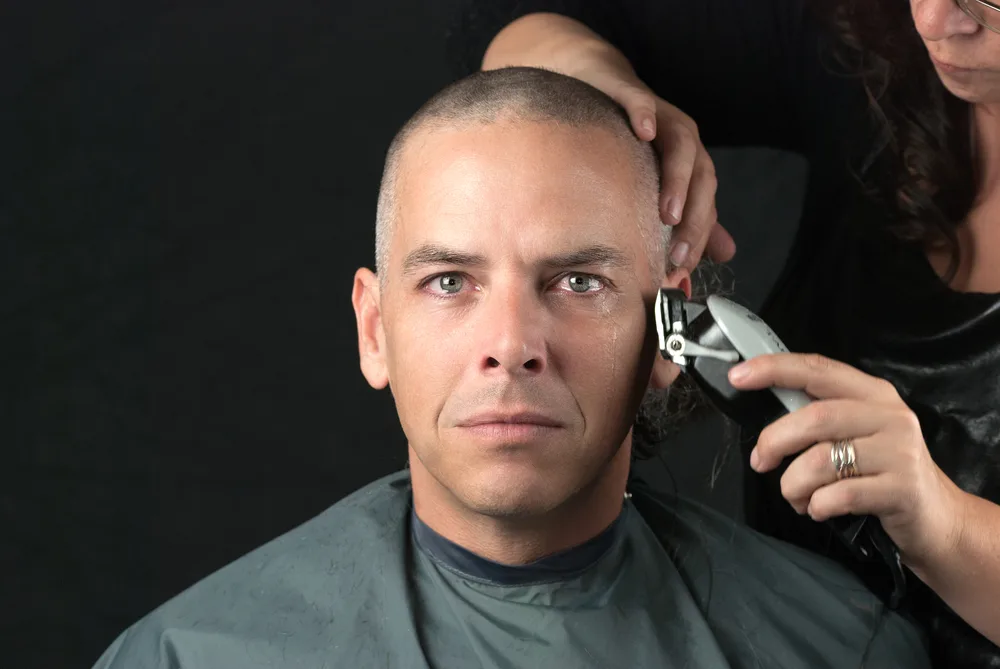
David Stuart Productions/Shutterstock
If you just can’t wait for the length on the back and sides to grow out, you can always opt for a buzz cut (or shave your head entirely). This will enable you to achieve a uniform length again without going through the grow-out period with different lengths that need to be blended or tapered.
If you’re not really attached to your length and are open to a big change, a short buzz cut may be the perfect solution to growing out your undercut!
You can easily take care of this at home if you have a quality head shaver or set of clippers. We really like the FlexSeries Electric Head Shaver from Freedom Grooming for close shaves, buzz cuts, and tapered cuts.
It comes with a 5-head shaver that can give you a smooth, shaven result and multiple attachments like precision clippers for buzz cuts (3mm, 5mm, and 7mm), an exfoliation brush, pre-shave massager, and ear and nose trimmer.
How to Grow Out a Nape Undercut
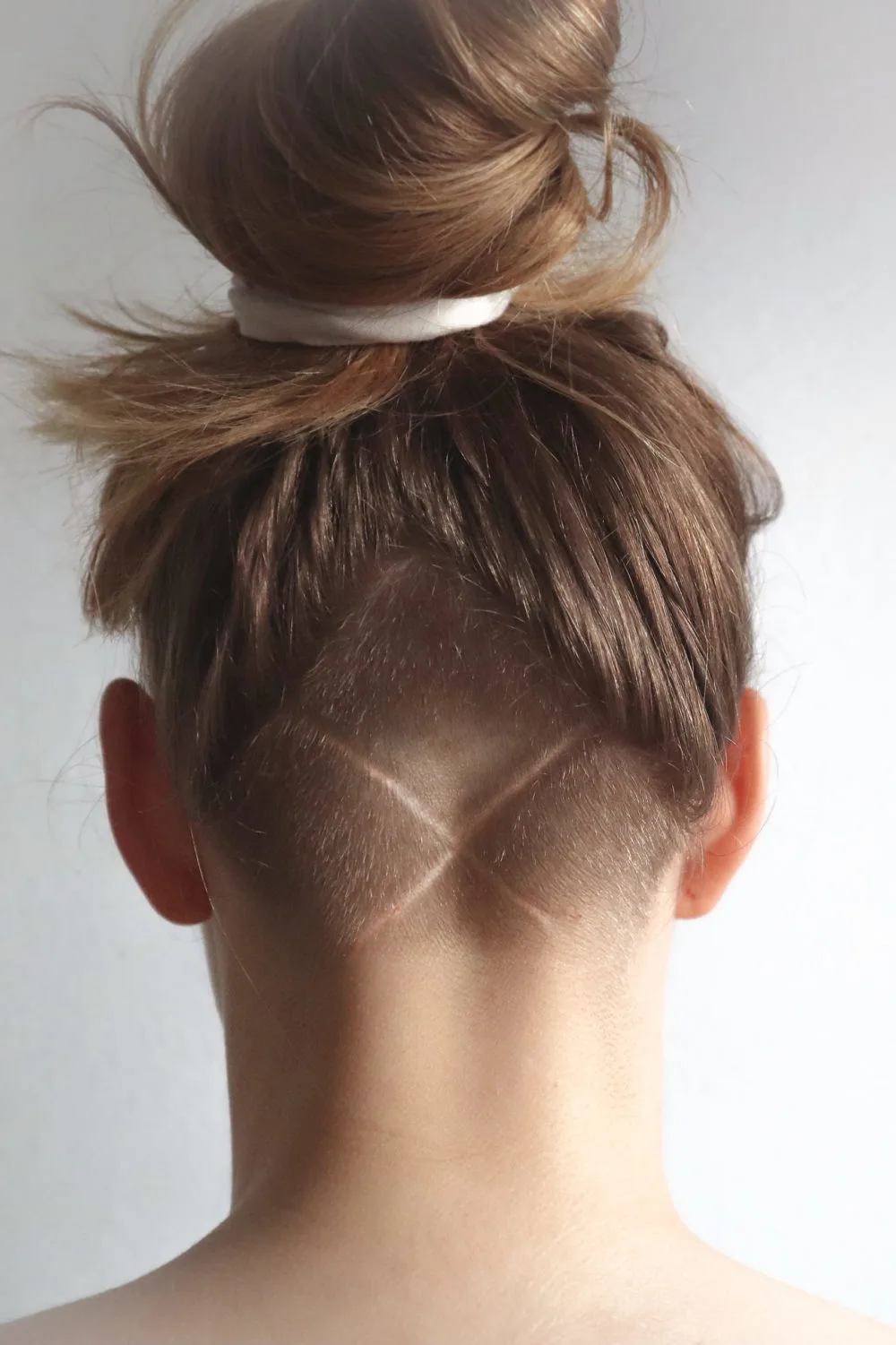
Lamushom/Shutterstock
If you’ve been rocking a nape undercut with long hair, it can be daunting to approach the grow-out process. Unless you cut your hair considerably (like a pixie cut or short inverted bob), you’ll be left with a small, short section at the nape of your neck.
In this case, you’ll spend years waiting for it to grow out completely. Fortunately, there are a few things you can do and shortcuts to take to make the grow-out process easier for nape undercuts.
Wear Your Hair Down

buritora/Shutterstock
The easiest trick to covering up an undercut while it grows out is wearing your hair down (or half up, half down). As long as your hair is long enough to cover the nape of your neck, this trick works really well. Just make sure you don’t pull all of your hair around the front of your shoulders to keep the short section at the nape hidden!
Pop in a Claw Clip
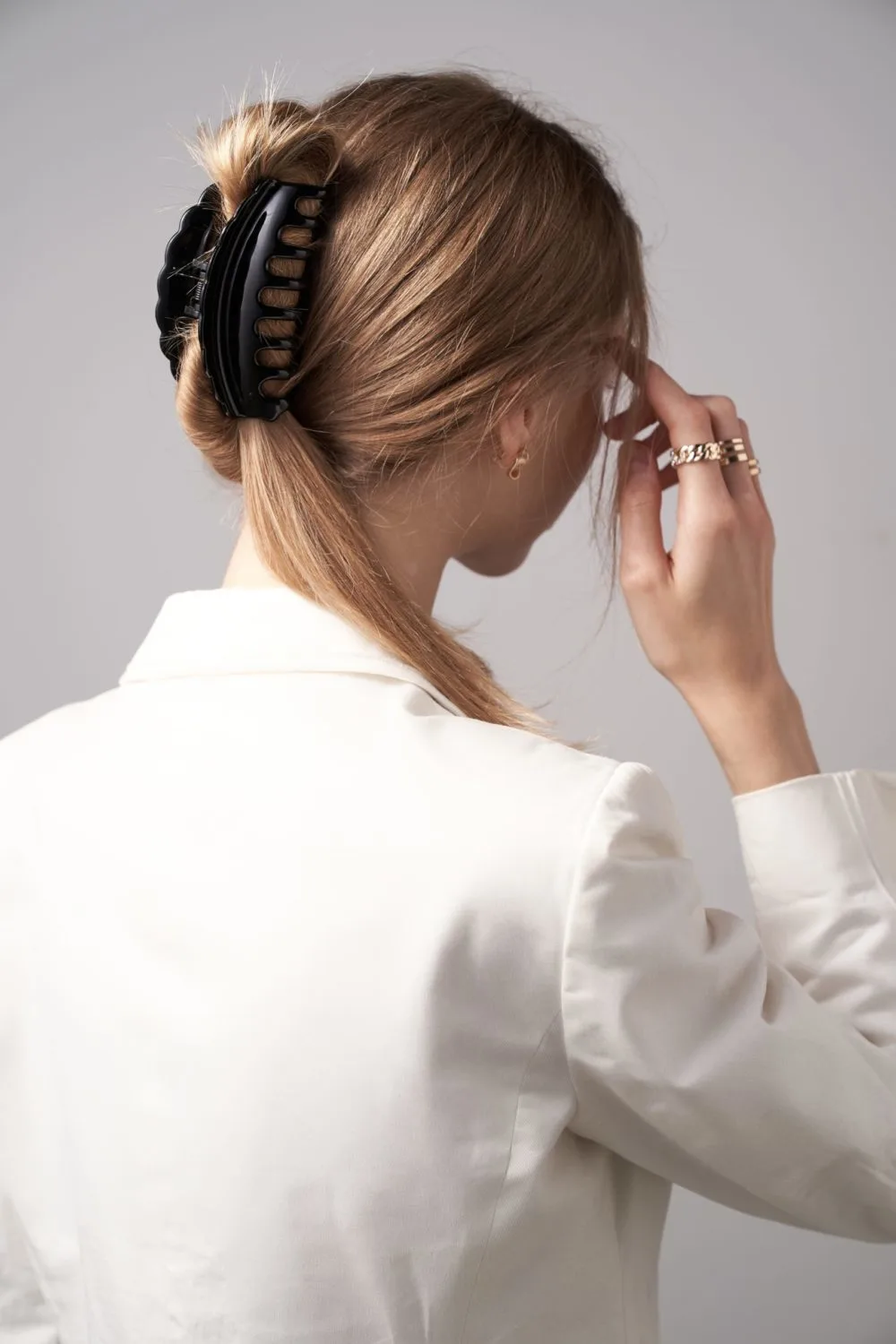
Redumbrella Europe/Shutterstock
Claw clips are a great way to gather and style your hair without revealing the short, growing-out section where your undercut was. Twist your hair upward into a coil and bring the tail of the coil back down before clipping. Arrange the ends to help cover any short areas showing around the sides of the bottom.
You Might Also Like:
- The 7 Best Claw Clips for Thick Hair in 2024
- 11 Trendy Butterfly Clip Hairstyles to Wear in 2024
- The 7 Best Hair Clips for Thin Hair in 2024
Try a Low Ponytail or Bun
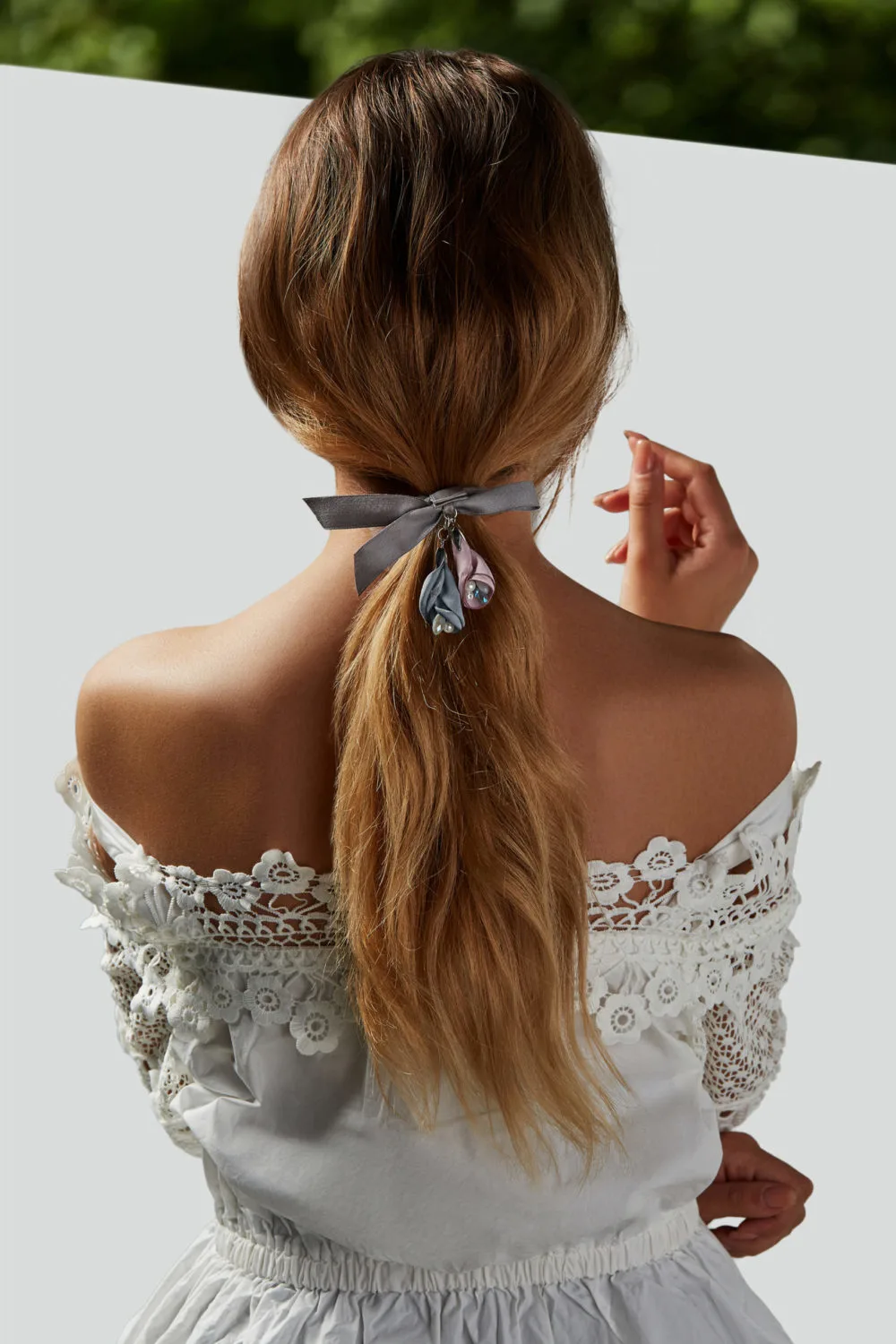
Red Umbrella and Donkey/Shutterstock
A super-simple low ponytail or low bun will easily cover up your undercut while it grows out. Gather your hair as low as you can and secure it with an elastic, tugging on the hair above the elastic if needed to help cover the undercut zone. Dress it up with a ribbon, bow, or scrunchy for even more concealing power!
You Might Also Like:
- How to Do an Extended Ponytail
- 10 Sleek Ponytails That Slay in 2024
- How to Do a Sleek Ponytail: Step-by-Step
- 30 Cute Ponytail Hairstyles for 2024
Go for a Shorter Cut
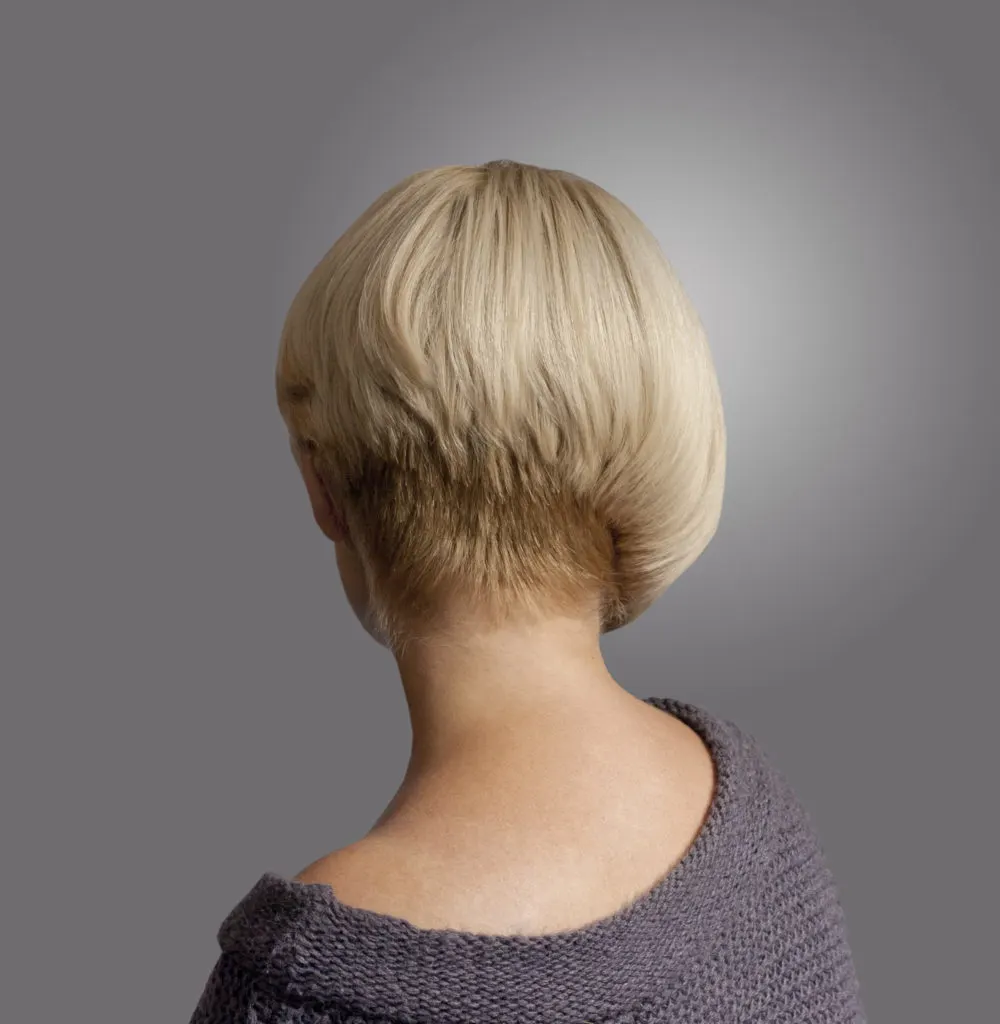
Yuliya Chsherbakova/Shutterstock
A shorter haircut is another great way to transition away from your nape undercut and adopt a new look. If you’ve been thinking about going short, now’s the ideal time! Choose a short asymmetrical bob as shown, a pixie cut, an inverted bob, or an ultra-short crop or buzz cut to give your mane an edge.
Tips and Things to Consider
- Texture helps a lot when growing out an undercut. If your hair is pin-straight, you might find it harder to cover up or transition an undercut as it grows out. Waves and curls definitely make it easier because they add interesting texture that makes length differences less noticeable. They also add lots of volume that covers a nape undercut well!
- Don’t sweat it too much. Grown-out undercuts are tough to blend in with the rest of your hair, but it’s really not a big deal. If you find yourself considering a radical haircut to remove all traces of your undercut or constantly making sure the areas are fully covered, remind yourself that a little length difference isn’t going to ruin your look. There are plenty of methods in this guide to help make it less noticeable – just don’t sweat it too much!
- Consider these tips if you’re planning on getting an undercut. It’s not impossible to grow out an undercut with style, but it’s definitely more challenging than growing out, say, a basic tapered cut for men or bob for women. If you’re here getting tips in advance because you’re considering an undercut or any other cut that pairs 2 disconnected, unblended lengths, make sure you’re aware of what you’re getting into!
- These tips work for other cuts with major length differences. You can use many of the tips in this guide when growing out almost any haircut with big differences in length – two block cuts, fades, pompadours, asymmetrical bobs, inverted bobs, and more. When in doubt, going shorter can usually adjust the length enough to make it easy to blend (or to create uniform length all over, if you go short enough).
Undercuts are a commitment of sorts and many don’t realize this until after the fact. Cutting your hair into 2 radically different lengths is always going to result in a more difficult grow-out phase, but there are plenty of ways to make the transition easier.
If you’re already rocking an undercut and are beginning to grow it out, we hope some of the methods, cuts, and styles in this guide will make the process easier.
From transitioning into fades, tapered cuts, short bobs, pixies, or buzz cuts to rocking nape-concealing styles like low ponytails, down or half-up styles, or claw clip looks, we’ve got you – and your undercut – covered. Happy styling!
